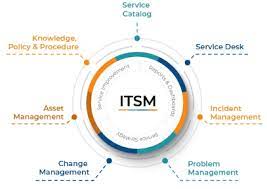ITSM (Information Technology Service Management) refers to the management of IT services and their end-to-end delivery to customers.
It takes into account the entire process, whether design, creation, delivery, or support. Lemon Learning invites you to discover the advantages of ITSM, its tools, and its best practices.
Better understand ITSM
ITSM refers to how an organization manages its people, processes and technology in order to deliver IT services. It includes their entire life cycle, integrating several tasks at different levels such as:
- plan and manage IT systems,
- resolve or prevent problems,
- manage the budget, etc.
We thus understand that the usefulness of ITSM in terms of management for this type of business goes well beyond simple IT support.
By contributing to the entire process and management, its implementation brings considerable benefits and constitutes a driver of commercial value .

What are the advantages of ITSM?
Managing IT systems is essential. The main benefits of ITSM relate to improving the quality and efficiency of IT services. It also allows for cost reduction and resource optimization.
Companies standardize their IT processes with the uniformity of ITSM infrastructure. This allows them to be more efficient in their IT operations. Automation eliminates repetitive or manual tasks and simplifies actions such as incident and ticket management. The IT team can then focus on higher value tasks.
By reducing manual workload, recruitment requirements are limited and operating costs are lowered. ITSM also makes it possible to anticipate and prevent problems that could involve an interruption of activity or service. The company also has the means to recover more quickly after an incident.
An ITSM system will be based on ITIL (Information Technology Infrastructure Library) to ensure technical management within an organization. Employees will be able to work productively with IT services adapted to the needs expressed. ITSM can also use the DevOps framework which emphasizes continuous development, integration and automated delivery.
What are the popular ITSM tools?

An ITSM tool refers to software that offers IT services. There are mainly three types of tools, namely:
- support centers that facilitate contact with customers’
- technical support allowing customers to find solutions to their problems,
- tools that monitor servers and applications.
Service Desk is an example of ITSM software. Offered by SolarWinds, the tool helps users manage IT environments where employees work remotely and where equipment is numerous.
You also have the Octopus-ITSM software which complies with the ITIL standard. Its installation makes it possible to organize work in a company based on automatic processes. It is a tool that monitors incidents and reduces the number of requests to the IT department.
Adopted by several companies, Zendesk ensures exchanges with customers through online chat, by email or on social networks. All messages are centralized to prevent certain tickets from being missed by agents.
You will therefore choose your tools among the solutions available on the market according to the functionalities and performances sought.
Best practices in ITSM
For an effective implementation of ITSM, certain principles are essential. Best practices include:
- alignment with business objectives,
- investing in good tools,
- the use of a frame,
- communication within the company,
- the formation continues,
- starting with easy-to-achieve goals.
ITSM can constitute a real strategic lever when business objectives are included from the start. It is an approach that allows the organization to optimize its IT services, but also its commercial approaches.
The best tools make it easy to empower workflows. This results in more efficient and faster service delivery. You have measurable data in terms of processes and results for continuous improvement of the company’s activities.
Preferred frameworks such as ITIL, COBIT or ISO are references that you can adapt to your organization. You will have an interesting base, instead of starting from scratch to find the appropriate strategy.
The application of ITSM sometimes turns out to be complex. Communication in simple, understandable language promotes information sharing and improves employee engagement.
Ongoing employee training may also be necessary to facilitate the implementation process. It is also recommended to start with goals that are easy to achieve, as the first achievements can strengthen the motivation and confidence of those involved.
ITSM IT Service Management provides a strategic approach to businesses that can ensure their processes and technologies achieve their goals. It relies on different tools to improve its efficiency while reducing costs. It is a real development asset when you adopt good practices to successfully implement it.